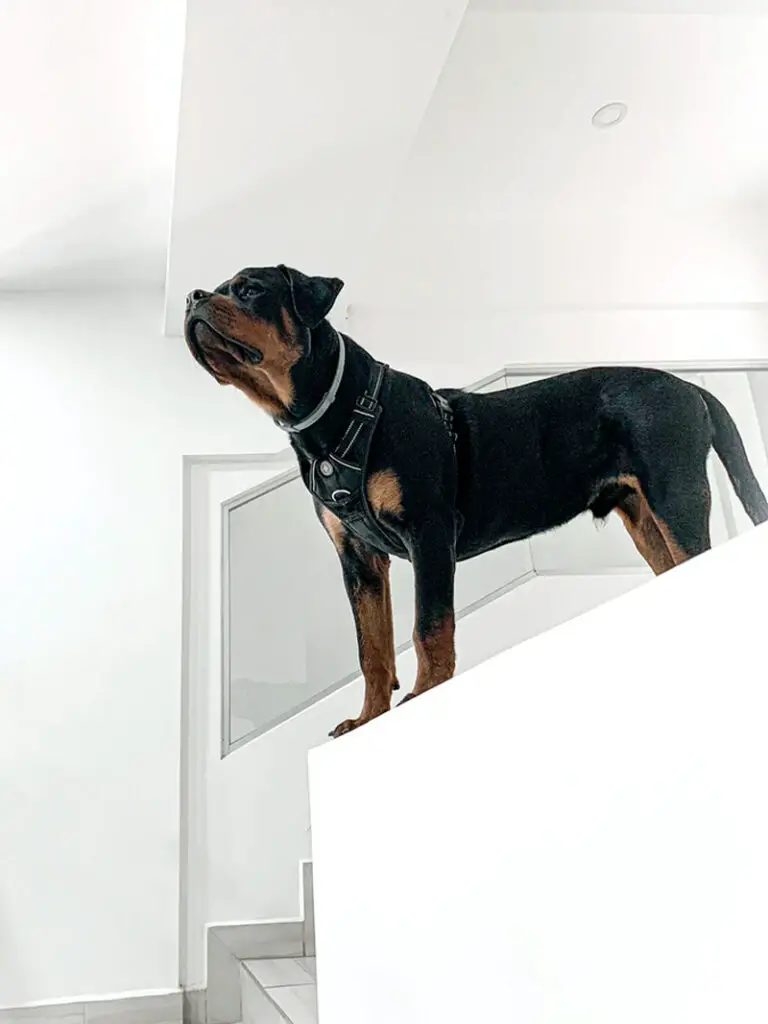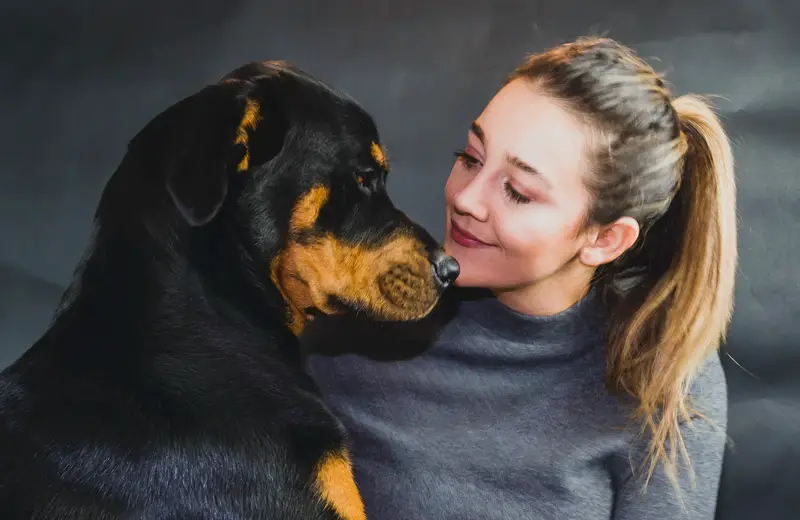Top Reasons Why Rottweilers Sit On The Owners

Rotties often develop a deep sense of attachment with the owners due to their loving and protective traits.
Feeling of Boredom
Rotties, like several dog breeds, are creatures of habit. If you have built the routine of taking your buddy out for walks at a specific time and missed it on a day by chance, they may sit on you. This reaction is a means of saying that they feel bored and want you to take them out.
There may be signs of excitement to pair along and some long-eyes that plead you to listen to them.
Separation Anxiety
Being alone for long hours at a stretch while you are out working can induce anxiety in them. They love laying beside their owners, playing, and cuddling. Once you are back home, the Rottie tries to compensate for the loneliness by sitting on you.
This reaction is a sign of unconditional love from your pup. You can also see some tail-wagging, licking, and a low-rumbling sound (the doggy equivalent of cat’s purring) that indicate their happiness being in your presence.
If your Rottie is a fully grown adult dog, their weight may be too much to take at times. In such a situation, signal them to sit beside you rather than on you.
Inherent Protectiveness
Being one of the most loyal and protective breeds, Rotties will sit on your lap to spread their scent on you as a passionate act of possessiveness.
If you have young children at home and having seen the kids sitting on your lap often, the dog can tend to feel jealous. So they exhibit this behavior, trying to make a statement that you belong to them and you are their numero uno.
Show of Dominance
Lack of training can cause the Rottie to follow their instincts of aggression, herd mentality, and dominating character. Sitting on you is an indication of the same.
In this case, you need to be aware that the dog may follow up this act with some form of aggression. Your immediate attention is necessary. Prioritize their training routine and in an assertive yet loving manner, let them know that you are the master, not them.
Excessive Adulation has Spoilt Your Dog
It may so happen that you reinforced the lap-sitting way too much. This action made the dog think you love it a lot, making them repeat the act.
An adult Rottweiler is not a light fellow. They can weigh anywhere between 40-60 kgs, which is enough to give you a thigh sprain. Ensure to negate the unwanted reinforcement by providing strict guidelines to your canine friend.
Give them treats or comforting words as soon as they are out of your lap. This response will help them infer the message you are trying to make.
They would also showcase some signs seeking more affection from the owner. Turning around and exposing their bellies for a “Belly rub” is pretty standard among Rotties. Nose nudges and sighing sounds are also seen in many cases. They feel secure and content just lying on you or beside you.
Rottweilers are intense and passionate when it comes to the bond they share with the owner. They feel a constant need to impress you. Getting some appreciation and respect from the pet parent means a world of happiness for them.
So far, we have gone through some of the primary causal links that prompt your Rottie to sit on you. In the next section, we will discuss specific control/preventive measures that will help control this behavior.
Before that, we would like to share an incident with one of our dogs at the dog training center. Missy, the Rottweiler, was so clingy and possessive that every time our cat sat on my lap, she would growl and scare the kitty away. She would then take the cat’s position on my lap. With proper positive reinforcement and obedience training techniques, we made her understand that this was not desirable behavior.






